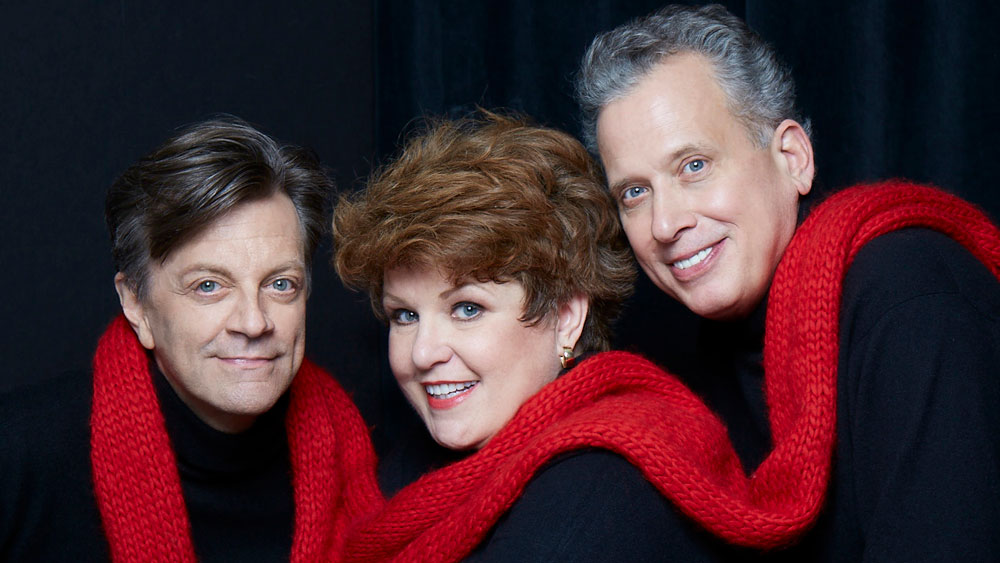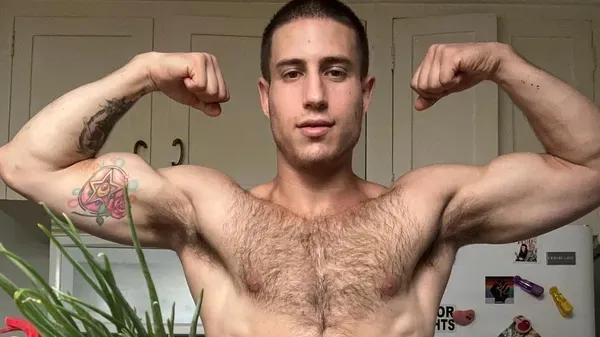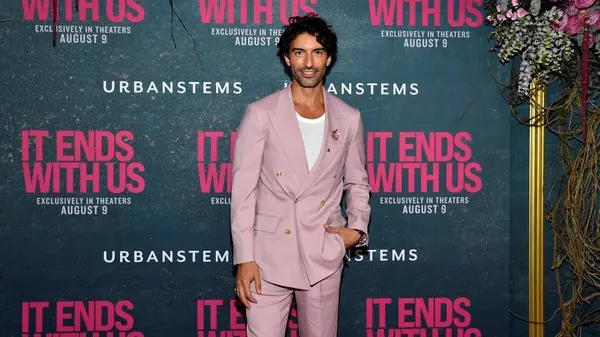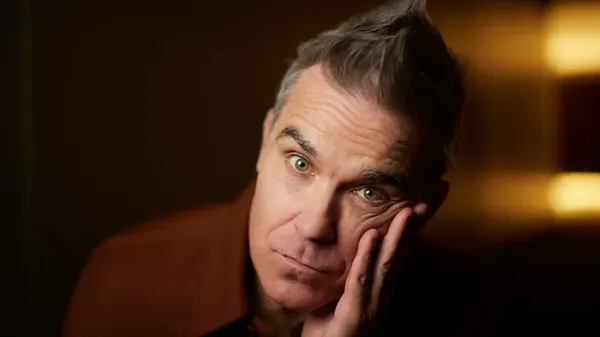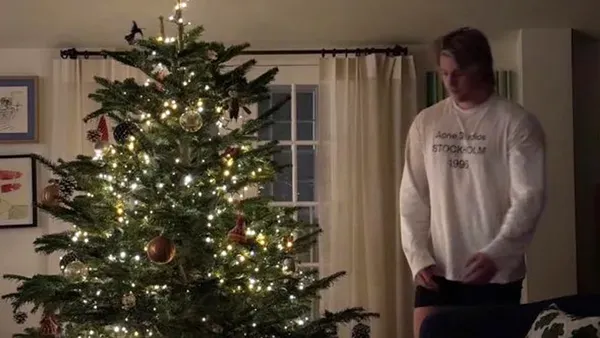
June 9, 2018
Broadening the Palette :: Painter Rae Senarighi on His TRANSCENDent Portraits
Kilian Melloy READ TIME: 12 MIN.
Painter Rae Senarighi's work is popping up at showings across the nation, from New Hampshire to San Francisco to Portland to his native Montana. Prismatically colored with a rainbow of hues, the portraits in his "TRANSCEND" series bring out a kind of inner light from his subjects - all of whom, true to the series title, are trans or gender-nonconforming.
As a matter of full disclosure, it was a personal connection that brought Senarighi to the attention of this correspondent. (He is a close friend of my sister.) Once I had seen Senarighi's work, however, there was no question but that there was a discussion to be had around his vision, and the project to which he's bought that vision.
Senarhighi's portraiture dazzles with human honesty and a visually articulate warmth. It's authentic and important work in a time when trans youth are being callously disregarded by their own government and reactionary forces revel in the kind of political clout that sees LGBTQ citizens erased and ranked second-class behind people of hostile faith traditions. And it's spiritually and artistically nourishing to see such lively colors used in such a joyful manner at a moment when it's hard not to feel that a vitality-draining pall has fallen over our nation's body politic.
More remarkable still is the way Senarighi found his way to this work, first in the face of a life-threatening illness and then through serendipity. There's an object lesson in the story this artist has to tell us, both in Senarighi's chosen visual medium and in words: There are things that truly matter in life, and one of those things is to be true to one's self, whether as an artist or as a human being.
EDGE had the pleasure of chatting with Rae Senarighi recently.
EDGE: Just a couple of years after you finished your art degree you received a Hall of Fame Award from the Art Institute of Seattle - that is amazing! What does that award recognize?
Rae Senarighi: They were just featuring folks who had graduated from there and were pursuing their degree field and who had, in their mind, achieved what I think the school was looking for, which is to succeed in your field.
I think that's why they chose me - the career that I invested in was kind of odd because I'm not a scientist. I didn't go to school for scientific illustration, which is something that a lot of people do, and it was a little unusual that I got the job that I did. They recognized that.
EDGE: You spent around ten years doing medical artwork - what did that mean in your case? Cells, microorganisms, organs and organ tissue? That sort of thing?
Rae Senarighi: I still have that job. My fine art at this point - I consider it another job, but I have a day job, which is scientific illustration. I work for a team of scientists called Altius Institute for Biomedical Sciences and they are a pretty incredible team of scientists who get published in all the big magazines on a pretty regular basis. They are part of an international consortium of scientists who are mapping the human epigenome - the epigenome surrounds your genome and turns genes on and off. It's pretty fascinating stuff.
I help them with branding and website graphics when we need them. For the most part, I help them with figures that they need when they're publishing papers or for presentations they're giving. I help them with information graphics from time to time, and we're also building a library of illustrations of the areas of the body and tissues that they have this data on as they build this library. It's a visual map for the adult and fetal human and stem cells. You can dig into those with this visual aid.
It's fun and it's very interesting stuff. I have to learn constantly. I feel that I have almost got another master's degree, even though I didn't go back to school! Having to learn every day has been a wonderful experience. I don't think I'd be doing what I'm doing in fine art had I not spent so many years figuring out how to draw things that I've never seen.
EDGE: It was a medical situation that led you to focus more on fine art, or at least on the portraits you're now doing. Do you mind sharing a little about that experience and how facing illness might have led you to reprioritize your life, and how it brought you to portraiture?
Rae Senarighi: I've always considered myself a fine artist, ever since I was little kid. I went back to school for commercial art, got really focused on trying to create a career there when I got out of school, and I think I was waiting around for something. I didn't know what to do or what to paint, so I focused on my career in commercial art.
When I got cancer I realized I might not have a lot of time. I'm really lucky in the kind of cancer I got - I'm still in treatment for it - I had a friend who had been battling it for about a year when I was diagnosed. Her memorial service was on the weekend of my surgery. So, you know, the reality of facing my own mortality was pretty stark, and kind of realizing that I have to just start making art, whether I'm getting paid for it or not. I restructured my thinking around it and decided to treat my fine art with the same respect that I treat my paying commercial artwork. We've turned our garage into my studio, so if I only have ten minutes at the end of the day to go paint, that's what I do. And if I have a whole afternoon, I'll go in there on a Saturday.
My first series was an abstract series that was about love; the portrait thing actually happened by accident. I got hired by PCC (Portland Community College) to do a mural. I was painting portraits of six LGBTQ people who the students had chosen on the wall. I was wrestling with how they looked and ended up changing my plan and deciding to paint those people with vibrant rainbow colors because they're all rainbow people. Once I made that decision it just started flowing out of me; I had so much fun completing that mural I knew I had to do more of this.
So I reached out to some friends of mine to see if they would be models for me to get this project started. I wanted to narrow the focus from the broad spectrum of LGBTQIA to just trans and gender-nonconforming folks; just thinking about portraiture in the larger context, art museums worldwide are filled with [portraits of] presumably cisgender and predominantly white folks. If I can fill that gap in even a very tiny way, I feel like it will make a difference. And it certainly has; I've had three art openings thus far of the TRANSCEND series, and the folks who have come who are transgender and gender-nonconforming have had pretty strong emotional reactions to seeing representations of people like themselves. That means a lot to me, and also my goal is to help generate respect for the trans community. I believe that respect comes through understanding, so sharing our stories not only helps transgender people understand ourselves, but it helps the larger public understand us.
All the people I have painted are putting themselves out there. They are telling their stories. Every time I show these pieces, the title of each piece is their first name, and I also list where they're from and their Instagram handle because I want people to go and find them and listen to their stories.
EDGE: There is that quality to your paintings - that there's a spark in these people you capture, and you're also communicating something about who they are. Are they talking to you about their lives while you're painting? Or are you relying on your own intuition to find these things about them you're getting across?
Rae Senarighi: When I started on this like I said, I started with some friends of mine; and then I started reaching out to people I followed and admired on Instagram. Because of the nature of this series I wanted to make sure that anyone who was in it agreed to be in it; I didn't want to paint them without their knowing, so I reached out to all of them and said, "Hey, this is what I'm doing, would you like to be a part of it?" All the people in the show have said yes.
Because I'm just doing his on my own, without any grant funding or anything like that, I didn't have the means to travel and do a sitting with them or do my own professional photography with them or anything like that. I chose people who were putting themselves out there, who were telling their stories in various ways and who also had good photography of themselves already. There's a part of me that wants to, in the future, be able to go and work with people, take my own photos of them, but all these photos [were images] they had up on their profiles.
For this series, I took a screenshot from Instagram and printed it in a black and white photo (they're actually pretty low-resolution images). I use black and white so I can be more free with my use of color and my interpretation of light. I'm not sure if I would do the same kind of work if they were sitting there in front of me, because the color of them and their clothes would be very vibrant, and that might change how I interpret my understanding and use of color. So I may continue to work from black and white photos, even if I do get to do my own photoshoots in the future.
EDGE: Do you have some insight into how painting a trans person - or being painted as a trans person - might resonate with the experience of being a trans person who might have felt forced into creating a whole different kind of public persona, a kind of fake portrait in one's life?
Kilian Melloy serves as EDGE Media Network's Associate Arts Editor and Staff Contributor. His professional memberships include the National Lesbian & Gay Journalists Association, the Boston Online Film Critics Association, The Gay and Lesbian Entertainment Critics Association, and the Boston Theater Critics Association's Elliot Norton Awards Committee.
